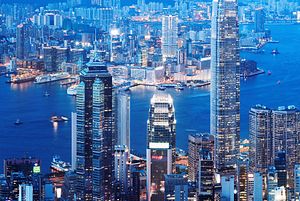Asia’s prospects for a prosperous Year of the Sheep could hinge on some critical economic events. Pacific Money takes a look at how 2015 might unfold for investors chasing that elusive golden fleece.
Interest Rates
The U.S. Federal Reserve has meetings planned for the end of January, mid-March and April, but its June 16-17 meeting could be the one in which it actually raises rates for the first time in eight years, according to the Sydney Morning Herald’s Malcolm Maiden. The fastest U.S. economic growth rate in 11 years makes a hike more than likely, with anticipation of higher U.S. rates already drawing liquidity away from emerging markets in Asia and elsewhere.
In contrast, the European Central Bank is expected to announce expanded quantitative easing when it meets on January 22, while China and Japan are also likely to continue monetary stimulus, to differing degrees. No such luck for Australians, with the Reserve Bank of Australia tipped to keep rates steady for some time to come.
Bonds
Bonds enjoyed their best year in 2014 in more than a decade, with an average total return of 7.6 percent, led by gains in U.S. Treasuries and German bonds, according to Bloomberg News. However, corporate junk bonds had their worst year since 2008, posting just a 2.5 percent rise.
With stronger global growth forecast for 2015, a repetition of the past year’s gains appears unlikely. However, bond investors will be watching the Fed’s move on rates along with the ECB’s, while the oil price’s slide puts further pressure on speculative-grade debt.
Meanwhile, Japan’s benchmark Nikkei Stock Average needs to reach 21,000 for Japanese stocks to start outperforming bonds after a long period of underperformance, according to the Nikkei.
Resources
Copper, thermal coal, iron ore and oil have been trading around five-year lows and as previously noted, analysts do not see a turnaround until the second half of 2015 at the earliest.
However, nickel and zinc are both tipped among the likely gainers this year, while CRU has forecast that these and aluminum, coking coal and tin will post price rises of more than 15 percent by 2018.
Nevertheless, China’s move to accelerate $1.1 trillion worth of infrastructure projects could help revive commodity prices, as it seeks to keep GDP growth above 7 percent. Analysts suggest keeping a close eye on China’s property sales, given its link to construction and associated resource demand.
Another indicator to watch is the Baltic Dry Index, a useful proxy for global trade and economic growth.
Deflation
Japan’s Abenomics has declared war on deflation, but the curse of falling prices could hit China and other manufacturers in Asia too. China’s slowing economy has weighed on commodity prices and a potential devaluation of its currency to boost exports could lead to deflationary pressure in manufacturing too, analysts warn.
“If the fight for market share moves into the manufacturing space, there is potential for a deflationary wave emanating out of China,” J2Z Advisory’s Jay Pelosky told the Australian Financial Review.
According to the financial daily, Chinese producer prices have dropped by 10 percent over the past three years and annual inflation is at only 1.5 percent, indicating the extent of the deflationary threat.
Currencies
An appreciating U.S. dollar is expected to challenge emerging market economies that have funded growth through U.S. dollar borrowings. According to Bloomberg News, 15 of 23 developing-nation currencies will drop in 2015, with the Philippine peso set to be Asia’s worst performer with a slide of nearly 2 percent.
Asian exchange rates will also weaken in line with the slumping Japanese yen, with the South Korean won tracking the yen’s fall due to the two nations’ export competition.
The Australian dollar recently hit a five-year low around US$0.80 and is expected to continue falling in 2015 as prices of the nation’s key exports weaken, with the nation’s central bank governor even suggesting that a level of US$0.75 would be appropriate.
Overall, key risks for investors in 2015 according to Australia’s CommSec are “the health of oil-producing economies following the fall of oil prices; deflationary tendencies in developed economies; health of the European economies; and the U.S. correctly picking the timing of the start of rate hikes.”
However, developing and emerging Asia will remain the key engine of global growth, with the International Monetary Fund forecasting in October an average 6.6 percent GDP growth rate for such countries led by India, the Philippines and Indonesia, as well as a 7.1 percent expansion for China.
While lower oil prices and monetary stimulus will aid growth, Asia’s policymakers still face the challenge of delivering on reform in 2015 to ensure a more sustainable trajectory, as asserted by HSBC’s Frederic Neumann.

































